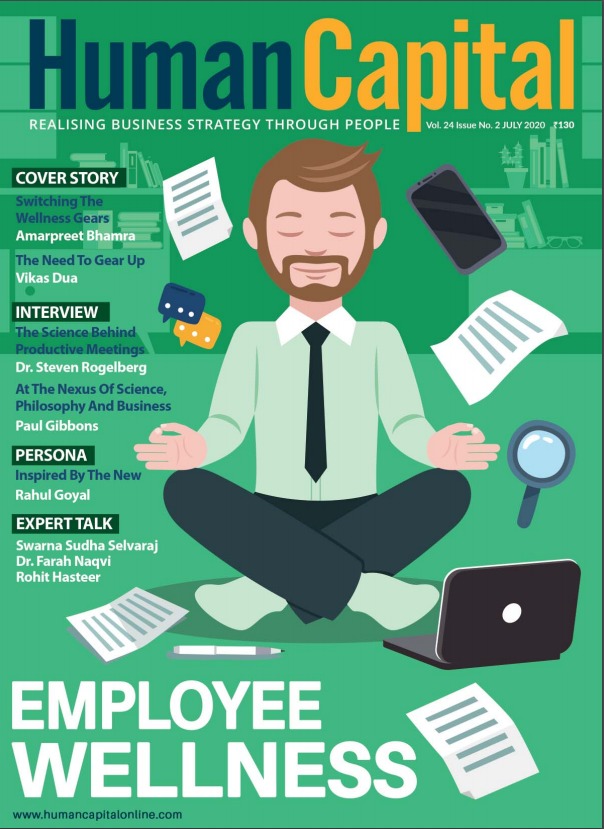Companies have their unique ways of inducting new employees to ready them to take up their new roles. The bigger the company the more formal and detailed the process. The smaller the organization, the more informal the process, sometimes involving a one-on-one talk across the table. Apart from the form filling, policy briefing, and provision of accessenablers like passwords and identity badges, induction may also involve some exposure to workrelated tools and processes, company products and services, and company history and culture.
No matter what the orientation programs cover, a significant amount of learning happens when the new employee interacts with colleagues at work, in breaks, and even while commuting.
All this has gone for a toss in this pandemic as people work from home. New employees go through the structured on-boarding and orientation programs remotely and are then pretty much on their own. In a world reeling with the COVID19 pandemic, it has become more difficult for new employees to navigate the critical first few months in their new workplaces. What can an organization do to meet this challenge?
The Utility of the Induction Process
Orientation programs ease the on boarding experience for a newcomer.
There is a comfort in knowing the established protocols and commencing work within the defined contours. While some companies have rudimentary systems in place, others have elaborate induction programs.
Some companies split their induction process into two parts to better manage logistics. The basic onboarding happens when each employee joins, and the more elaborate orientation happens once a week (or fortnight, or month) to ensure mass attendance. In small companies, this is an abbreviated process and somewhat informal.
People introduce each other, ask questions about past work, schools, colleges and thus connections are discovered, bonds forged, creating psychological comfort. The new employee watches peers, seniors, and juniors in meetings and understands the unwritten rules of conduct and even the informal power structures. By correlating body language with spoken and written communication they also understand the subtext of communication at their new organization.
Finally, after assessing friendliness, they frequently turn to peers for advice on specific work-related matters.
However, things have changed in the new work scenario where most entrants are working remotely. In better organizations, there are calls and emails to check how the new employees are doing. There is some sharing of contacts that they can reach when they have a query. All newcomers may not make full use of this for fear of sounding ignorant or fussy. The people who check in on them only ask if there are any specific queries. This is well-meaning but clearly does not substitute for physical co-location.
Consequently, the new employee is treated almost like a contract worker. They are assigned work, given a schedule for completion, pulled into reviews, and given workrelated feedback. They wait for the reviews and are hesitant to interrupt peers for advice because they cannot assess how busy they are.
It is a situation designed for disengagement. People who have worked together for a long time and are now working from home cannot understand why entrants are taking so long to settle in and why they do not speak or behave like ‘everyone else’. This is the situation in many large well-meaning organizations. In small organizations, things are much worse.
Ways to Mitigate the Problem
The Buddy System
Re-institute the good old ‘buddy’ system would be a great start.
Each new employee is matched up to someone who is a year or two older in terms of stay in the organization.
This matching should be done with care looking for common backgrounds like nature of work, college, gender, and language, if possible.
The buddy system was in place in many organizations even before the pandemic but was more like the icing on the cake, making a good orientation and adjustment program even better. Now it could well become a lifeline if properly handled.
While the buddy engages in unscripted conversations with the newcomer, they still need some preparation and selection. Taciturn buddies are of no use, nor those who merely become available for calls. An effective buddy should routinely run through the kind of issues often faced using their own experience and those of other buddies, as shared by HR.
This system can remove hesitation in asking what might appear as silly queries. Of course, there can be too much of a good thing.
The buddy should call frequently to start with (maybe every day for a few days) and then less and less, eventually being available only on call. A well-managed buddy system can and does go a long way in undoing the damage of the pandemic in the workplace.
Managers Must Play A Primary Role
Anecdotal evidence suggests that managers are communicating more with their teams, working from home. However, this is largely work-related. Most of them are under-prepared for the specific needs of newcomers because in the past the new person settled in without the manager getting involved in the little details. This is where HR must prepare supervisors of all kinds through special guidelines for the extra, new, induction-related responsibilities.
Indeed, if managers can help HR find matching buddies from the immediate work team, so much the better. These adjustment issues acquire an altogether different complexity when the new employee is a manager themselves. Their degree of engagement can have a multiplier effect on the team. Also, they may have set views on how one should interact with the team.
Even before the current pandemic, the effect of senior lateral hires on organizational culture was a matter of some deliberation. Working from home has merely made it worse. This where the next-level supervisor must step in by participating for a while in all formal meetings conducted by the new manager. The ostensible purpose is to ensure continuity and introduce the team. The equally important second goal is to orient the new employee.
As always, the smaller the company the harder it is to do all this. At the same time, the engagement level of an entrant in a fifty-member team is more critical than in a thousand-member team. In the absence of an adequatelystaffed HR function, it is the senior executives in small companies who should step in and do the needful. They will have to add this to their job description for the many difficult months ahead.
Does your organisation support you in maintaining work-life boundaries?
Trending
-
SBI General Insurance Launches Digital Health Campaign
-
CredR Rolls Out 'Life Happens' Leave For Its Employees
-
Meesho Announces 30-Week Gender-Neutral Parental Leave Policy
-
Microsoft Unveils Tech Resilience Curriculum To Foster An Inclusive Future
-
60% Indian Professionals Looking For Job Change Due To COVID: Survey
-
SpringPeople And Siemens Collaborate For Digital Transformation Push
-
86% Professionals Believe Hybrid Work Is Essential For Work Life Balance: Report
-
Almost 1 In Every 3 People's Personal Life Affected Due To Work Stress
-
Meesho Rolls Out Reset And Recharge Policy For Employees
-
80% Of Talent Leaders & Academics Say Pandemic Changed Skill Needs For Youth: Report
-
Hero Electric Rolls Out 'Hero Care' Program For Employees
-
Human Capital In Collaboration With ASSOCHAM Hosts Virtual Conference
-
IKEA India, Tata STRIVE Collaborate To Create Employability And Entrepreneurship Opportunities
-
SAP India, Microsoft Launch Tech Skilling Program for Young Women
-
DXC Technology, NASSCOM Collaborate For Employability Skills Program
-
Lenskart To Hire Over 2000 Employees Across India By 2022
-
Mindtree Launches Learn-and-Earn Program
-
Tata AIA Extends 'Raksha Ka Teeka' To Its Employees
-
Swadesh Behera Is The New CPO Of Titan
-
NetConnect Global Plans To Recruit 5000 Tech Professionals In India
-
Hubhopper Plans To Hire 60% Of Indian Podcasters By 2022
-
Corporate India Needs More Women In Leadership Roles: Report
-
Aon to Invest $30 Million and Create 10,000 Apprenticeships by 2030
-
Tech Mahindra Launches ‘Gift a Career’ Initiative for Upskilling of Youth
-
40% Women Prefer Flexible Working Options in Post-COVID World: Survey
-
3 out of 4 companies believe they can effectively hire employees virtually: Report
-
Vodafone , CGI and NASSCOM Foundation launch digital skills platform
-
Odisha: Bank, postal employees to deliver cash for elderly, differently-abled persons
-
Skill India launches AI-based digital platform for "Skilled Workforce"
-
Hiring activity declines 6.73% in first quarter: Survey
-
70% startups impacted by COVID-19 pandemic
-
Bajaj Allianz Life ropes in Santanu Banerjee as CHRO
-
Over 70 Percent MSMEs look at cutting jobs to sustain businesses
-
93 Per Cent employees stressed about returning to office post-lockdown
-
Johnson & Johnson India announces family benefits for same gender partners
-
Indian firms turning friendly towards working mothers
-
Welspun India names Rajendra Mehta as new CHRO
-
Wipro partners with NASSCOM to launch Future Skills platform



Human Capital is niche media organisation for HR and Corporate. Our aim is to create an outstanding user experience for all our clients, readers, employers and employees through inspiring, industry-leading content pieces in the form of case studies, analysis, expert reports, authored articles and blogs. We cover topics such as talent acquisition, learning and development, diversity and inclusion, leadership, compensation, recruitment and many more.
Subscribe Now












































Comment